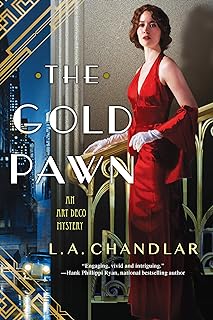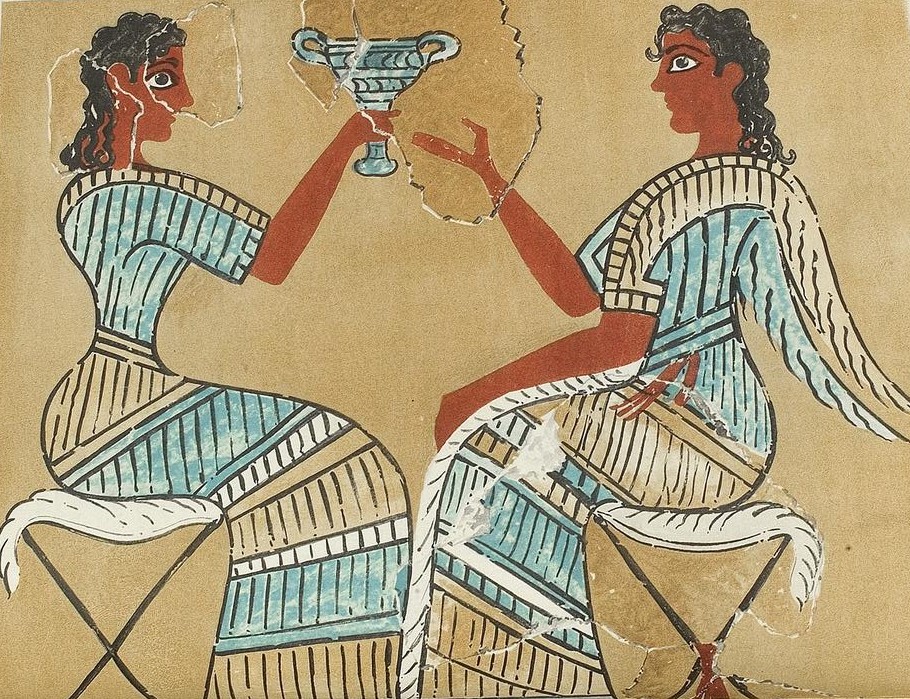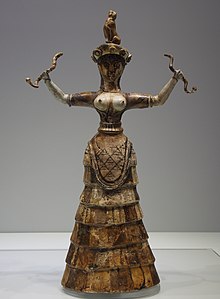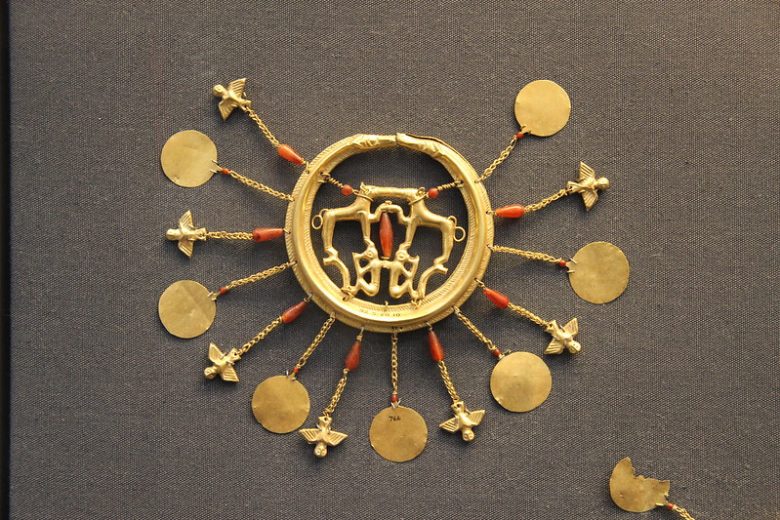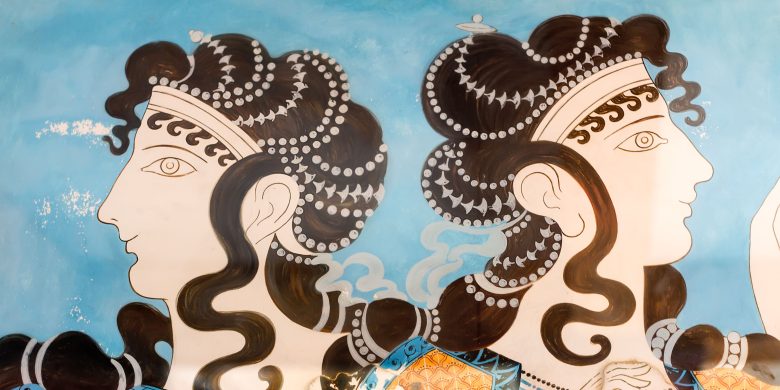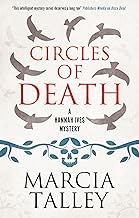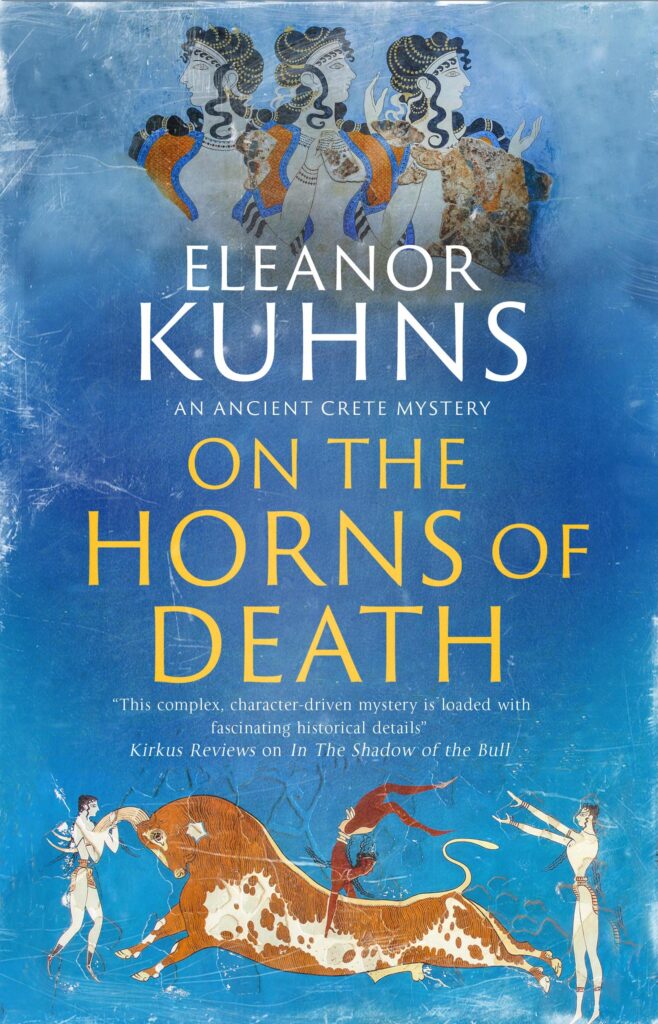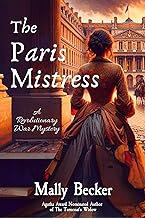Let me begin by saying that, although there are plenty of theories about burial practices, there are very few facts we know for certain. However, I gleaned what I could and imagined the rest. Since I write murder mysteries, I have to include something about funeral and burial practices.
Excavations have found human remains put in jars and secreted in caves but treatment of human remains began to transition to tombs. When Martis’s sister is interred In the Shadow of the Bull
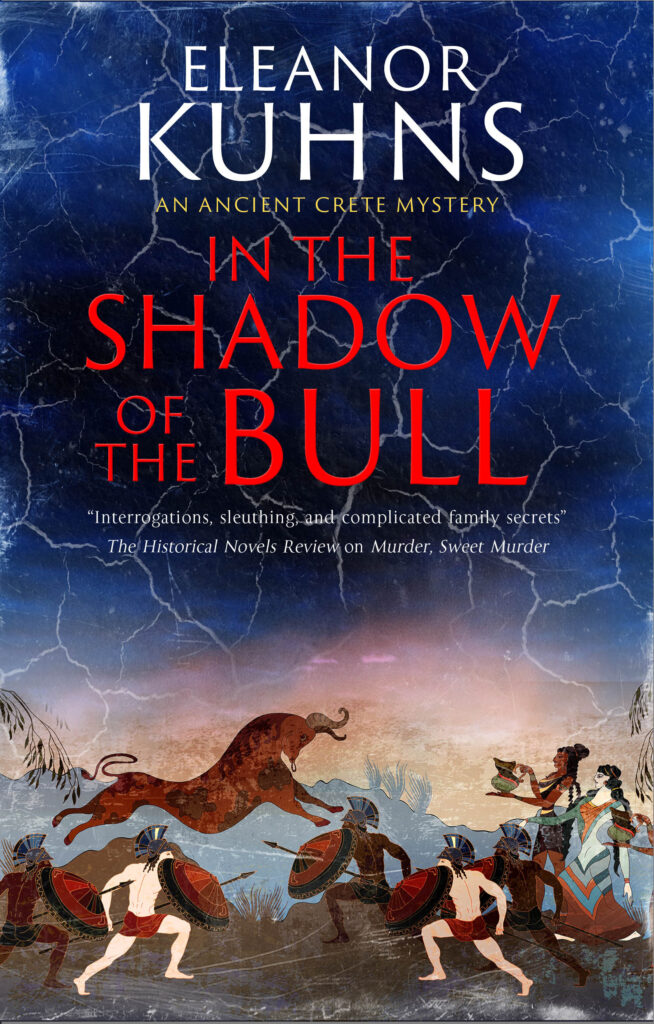
I describe what I imagined the scene to look like: the giant stone covering the entrance and the remains of many family members in one tomb.
I also include in both the Crete books, the above and also On the Horns of Death
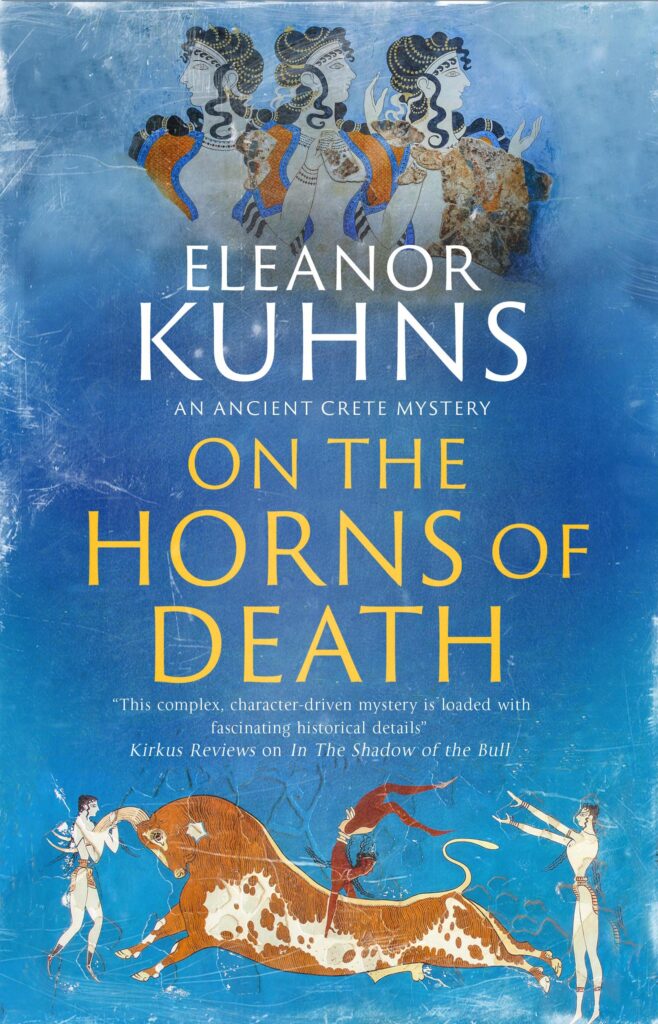
some other descriptions that might or might not be true.
A fresco from Crete show a musician playing a flute in front of what looks like a funeral cortege so I added that to my description. Martis carries gifts to add to the caskets: a small ship for her sister and a small clay figure of a bull for her friend. We know grave goods were included and during the Classical period, small ships were added to carry the departed over the River Styx. I theorized that this was a practice that began in the Bronze Age.
The professional mourners were also a feature in Classical Greece so I thought it was possible they were important before that era. I described them, in groups of a few to many depending on the wealth of the family, in both books.
Finally, I include a meal, a funeral dinner, if you will, connected to the services. I thought this was a reasonable supposition since, even now, food is offered to the mourners after a service. Descriptions of such meals are also part of Homer’s works so a decision to include them seemed safe.

